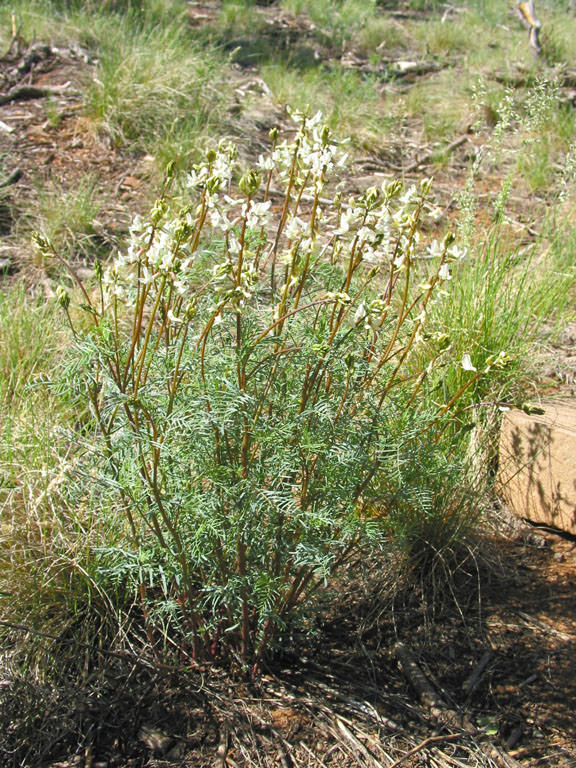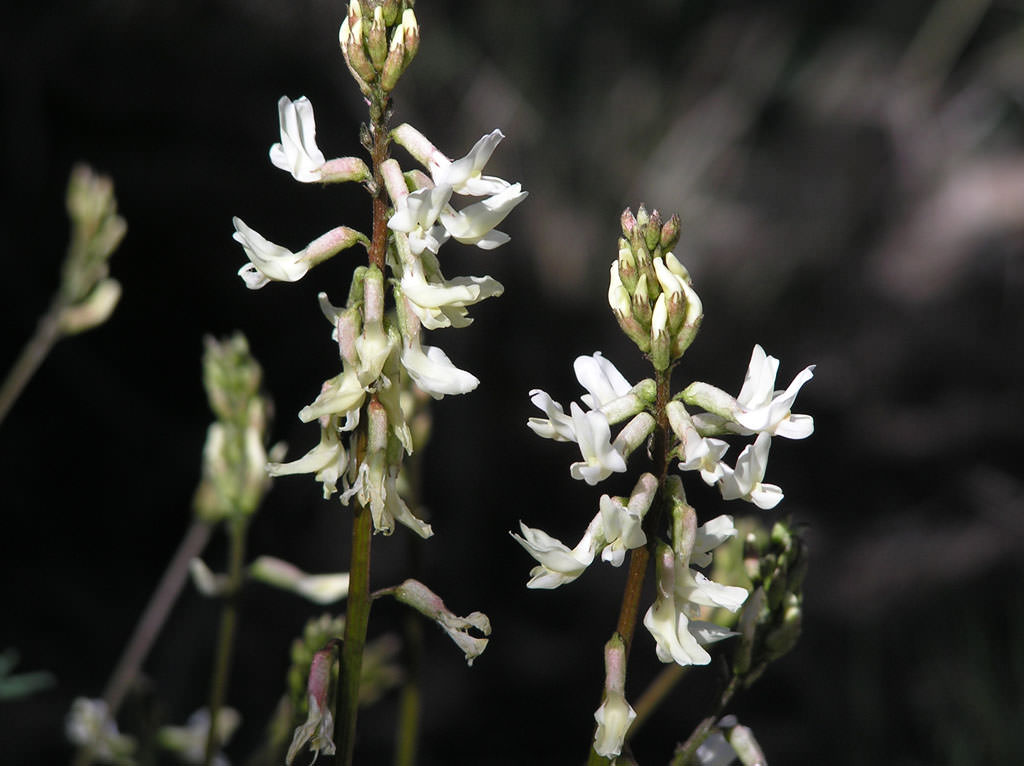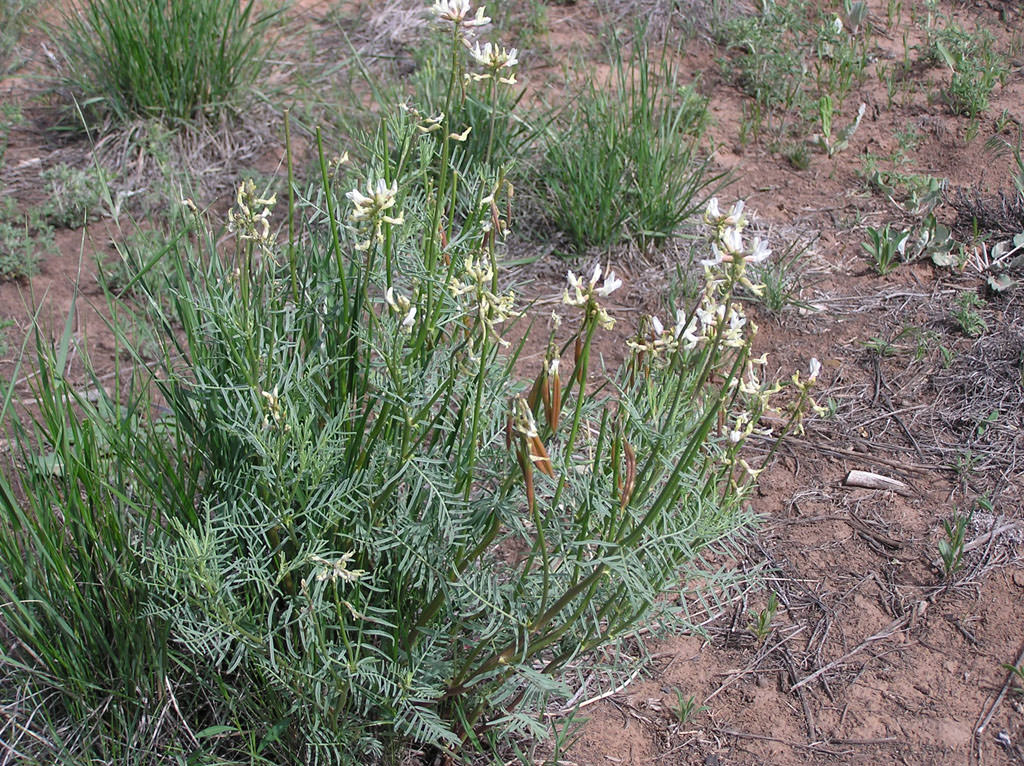Scientific Name : Astragalus schmolliae
Author : C.L. Porter![]() NatureServe Explorer
NatureServe Explorer
Common Name : Chapin Mesa Milkvetch
![]() Current Research Activities
Current Research Activities
![]() 1997 profile
1997 profile
Click link below for details.
Taxonomy
Fabaceae (pea family)
Ranks and Status
State Rank : S1S2
State Rank Reason : Astragalus schmolliae is known only from Chapin Mesa in Mesa Verde National Park and the adjacent Ute Mountain Ute Reservation in Montezuma County, Colorado, USA. Although the species is locally abundant there, it is known from only five occurrences. Much of the occupied habitat has been burned and Astragalus schmolliae density is declining within the burned areas. Threats include disturbance and habitat loss from infrastructure development and fire management activities within Mesa Verde National Park, competition from both native and non-native species, herbivory and trampling by feral horses and trespass cattle, and crushing of individuals along trails by park visitors. Additionally, long-term drought resulting from climate change may be negatively impacting the species.
U.S. Endangered Species Act : none
Colorado Threatened and Endangered List : none
Other Statuses : SWAP Tier 1
Description and Phenology
General Description:
Herbaceous perennial plants, 4-6 dm tall. Leaves are composed of 11-20 linear leaflets. Uppermost leaflet is jointed to the the rachis. Flowers are white, about 2 cm long, and have black hairs on the calyx. Pods are about 4 cm in length, strigose, curved downward, and dorsiventrally compressed (Spackman et al. 1997).
Look Alikes:
Astragalus schmolliae was possibly derived from a cross of A. lonchocarpus and A. scopulorum (Weber and Whittmann 1987). Astragalus lonchocarpus differs from A. schmolliae in having glabrous pods, and 1-9 leaflets with the terminal leaflet not jointed to the rachis. Astragalus scopulorum has truly connate stipules and sharply trigonous, laterally compressed pods (Spackman et al. 1997).
Phenology:
Flowers in May and fruits in June (Colorado Natural Heritage Program 2012).
Habitat
Astragalus schmolliae occurs on sandy and gravelly flats and terraces, among junipers and pinyon pines, on sandstone (Spackman et al. 1997). It grows primarily in deep red loess soil characterized as a clay to clay loam (NRCS 2017). Associated taxa include: Purshia tridentata, Amelanchier utahensis, Poa fendleriana, Achnatherum hymenoides, Penstemon linarioides, Quercus gambelii, Solidago petrodora, Opuntia polyacantha, Yucca baccata, Astragalus wingatanus, Lupinus amophilius, Eriogonum racemosum, Chrysopsis villosa, and Polygonum sawatchense.
click on image to enlarge
 | 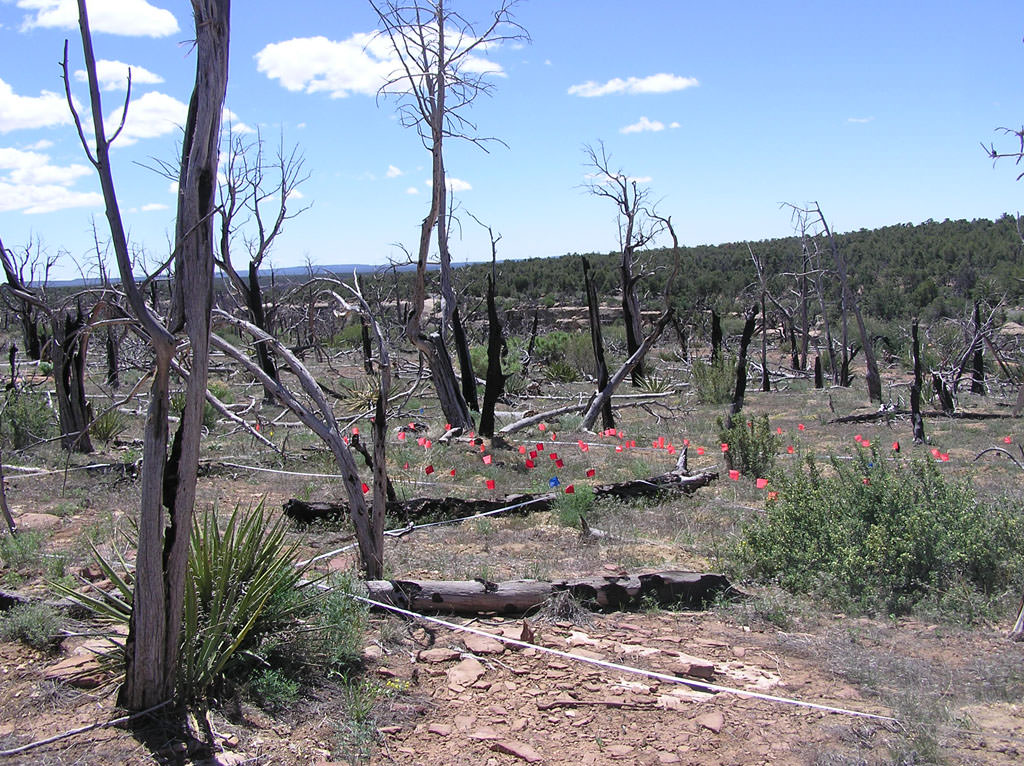 |
Elevation Range:
5,717 - 7,424 feet (1,742 - 2,263 meters)
Distribution
Colorado Endemic:
Yes
Range:
Astragalus schmolliae is endemic to Montezuma County, Colorado, USA. It is found in the vicinity of Chapin Mesa extending south approximately 6 miles into the Ute Mountain Ute Reservation. Estimated range extent in Colorado of 73 square kilometers was calculated in GeoCAT using occurrence data provided by the Colorado Natural Heritage Program (2022).
 Click on map to enlarge |
Threats and Management Issues
Threats to Astragalus schmolliae include disturbance and habitat loss from infrastructure development and fire management activities within Mesa Verde National Park (MVNP), competition from both native and non-native species, herbivory and trampling by feral horses and trespass cattle, and crushing of individuals along trails by park visitors. Additionally, climate change effects to the natural fire regime and long-term drought may be negatively impacting the species (Rondeau 2022). Fire mitigation that involves clearing vegetation for fuel reduction can impact A. schmolliae by removing aboveground stems, reducing available moisture by exposing soils to increased amounts of sun and wind, and increasing the potential for competition from invasive plant species such as the native grass mutton grass (Poa fendleriana), and seeded western wheatgrass (Pascopyrum smithii) (USFWS 2021). Musk thistle (Carduus nutans) is particularly invasive in burned areas of southern Mesa Verde National Park and has been observed invading areas occupied by A. schmolliae. Cheatgrass (Bromus tectorum) is also invading burned areas occupied by A. schmolliae. The abundance of grasses, especially cheatgrass, smooth brome (Bromus inermis), and western wheatgrass (Pascopyrum smithii) is outside the natural range of variation, resulting in a lack of bare ground and biological soil crust (Rondeau 2017, pers. comm.). This ?novel grassland? is preventing natural succession or return to the pinyon-juniper woodland habitat that A. schmolliae prefers and is reducing its reproductive vigor (Rondeau et al. 2022.). This species is considered to be extremely vulnerable to climate change (Handwerk et al. 2015).
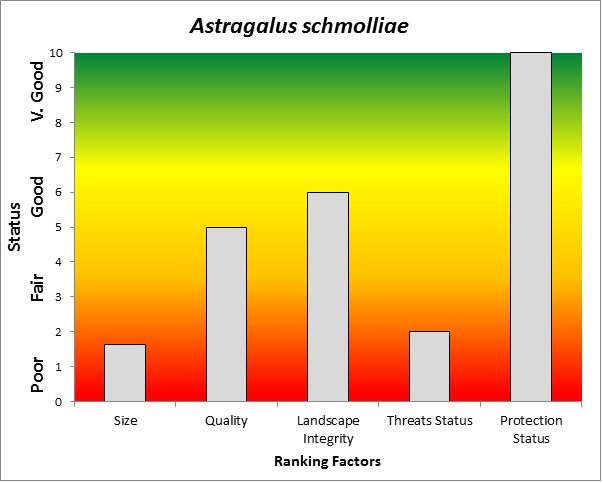 Summary results of an analysis of the status of Astragalus schmolliae based on several ranking factors. This species was concluded to be "moderately conserved”. From Rondeau et al. 2011. |
References
- Ackerfield, J. 2012. The Flora of Colorado. Colorado State University Herbarium. 433 pp.
- Anderson, D.G. 2004. Final Report: Population Status Survey of Schmoll's Milkvetch (Astragalus schmolliae Porter). Prepared for the National Park Service, Mesa Verde National Park. The Colorado Natural Heritage Program, Fort Collins, CO.
- Barneby, R.C. 1964. Atlas of North American Astragalus. 2 Vols. New York Botanical Garden, Bronx, New York. 1188 pp.
- Colorado Native Plant Society. 1989. Rare plants of Colorado. Rocky Mountain Nature Association, Colorado Native Plant Society, Estes Park, Colorado. 73 pp.
- Colorado Natural Heritage Program (CNHP). 2022. Biodiversity Tracking and Conservation System (Biotics 5). Colorado Natural Heritage Program, Colorado State University, Fort Collins.
- Handwerk, J., L. Grunau, and S. Panjabi. 2015. Colorado Wildlife Action Plan: 2015 Rare Plant Addendum. Colorado Natural Heritage Program, Colorado State University, Fort Collins, Colorado, USA.
- Natural Resources Conservation Service (NRCS). 2017. NRCS Web Soil Survey. Cortez Area, Colorado, Parts of Dolores and Montezuma Counties. https://websoilsurvey.nrcs.usda.gov/app/WebSoilSurvey.aspx. Accessed 3/9/2017
- Neely, B., S. Panjabi, E. Lane, P. Lewis, C. Dawson, A. Kratz, B. Kurzel, T. Hogan, J. Handwerk, S. Krishnan, J. Neale, and N. Ripley. 2009. Colorado Rare Plant Conservation Strategy, Developed by the Colorado Rare Plant conservation Initiative. The Nature Conservancy, Boulder, Colorado, 117 pp.
- O'Kane, S. L. 1988. Colorado's Rare Flora. Great Basin Naturalist. 48(4):434-484.
- Rondeau, R.J. 2022. Chapin Mesa Milkvetch Monitoring Results - 2021 Progress Report on Long-term Population Trends and Environmental Attributes of the Imperiled Chapin Mesa Milkvetch (Astragalus schmolliae). Prepared for Mesa Verde National Park; May, 2022.
- Rondeau, Renee J., David G. Anderson, Jill E. Handwerk, and Tova Spector. 2022. Post-fire Effects on the Globally Imperiled Chapin Mesa Milkvetch (Astragalus schmolliae), 2001–2019. Natural Areas Journal, 42(1) : 4-17
- Spackman, S., B. Jennings, J. Coles, C. Dawson, M. Minton, A. Kratz, and C. Spurrier. 1997. Colorado rare plant field guide. Prepared for Bureau of Land Management, U.S. Forest Service and U.S. Fish and Wildlife Service by Colorado Natural Heritage Program.
- U.S. Fish and Wildlife Service (USFWS). 2020. Threatened species status for Chapin Mesa milkvetch and designation of critical habitat. Proposed Rule. Federal Register 85(181): 58224-58250.
- U.S. Fish and Wildlife Service (USFWS). 2022. Review of Species That Are Candidates for Listing as Endangered or Threatened; Annual Notification of Findings on Resubmitted Petitions; Annual Description of Progress on Listing Actions. Notification of Review Federal Register 87(85): 26152-26178.
- U.S. Fish and Wildlife Service (USFWS). 2022. Threatened Species Status for Chapin Mesa Milkvetch and Designation of Critical Habitat; Withdrawal. Federal Register 87(22): 5767-5778.
- U.S. Fish and Wildlife Service. 2021. Species status assessment report for the Chapin Mesa milkvetch (Astragalus schmolliae). Lakewood, CO.
- USDA, NRCS. 2022. The PLANTS Database. National Plant Data Team, Greensboro, NC 27401-4901 USA.
- Weber, W. A. and R. C. Wittmann. 2012. Colorado Flora, Western Slope, A Field Guide to the Vascular Plants, Fourth Edition. Boulder, Colorado. 532 pp.


